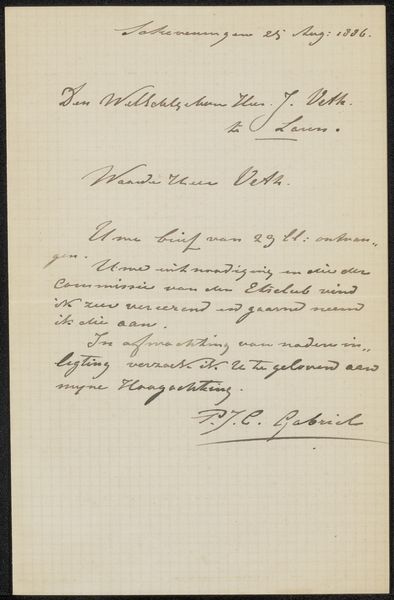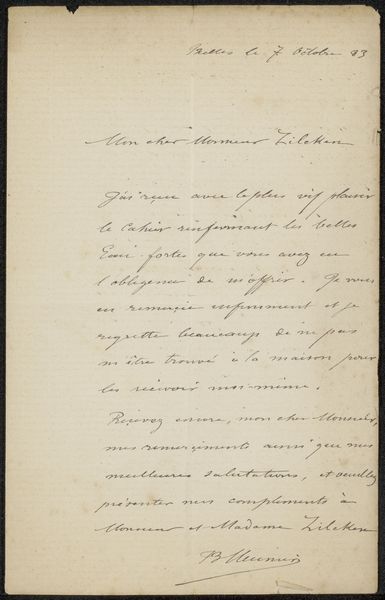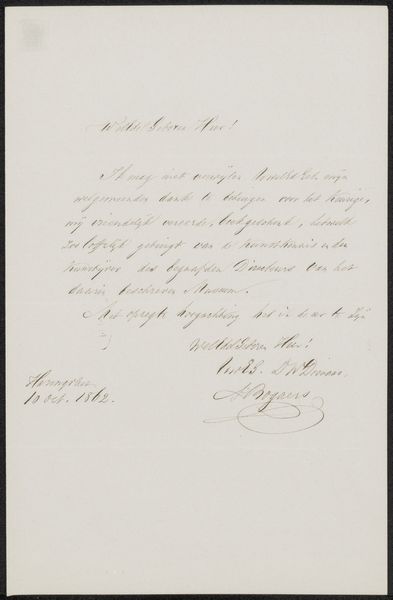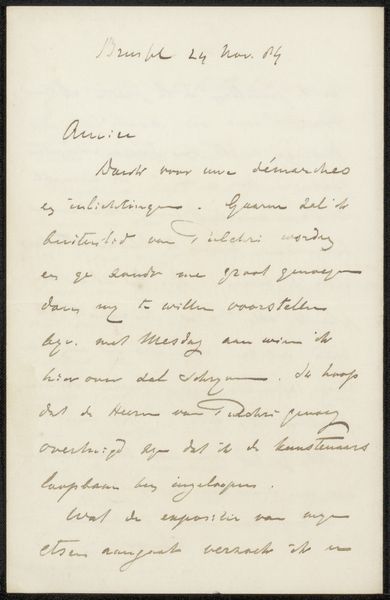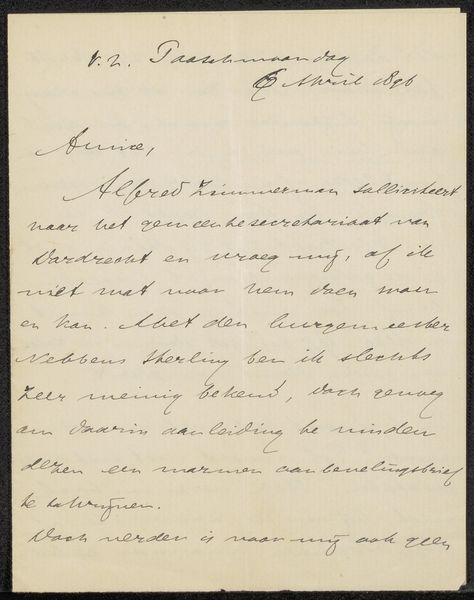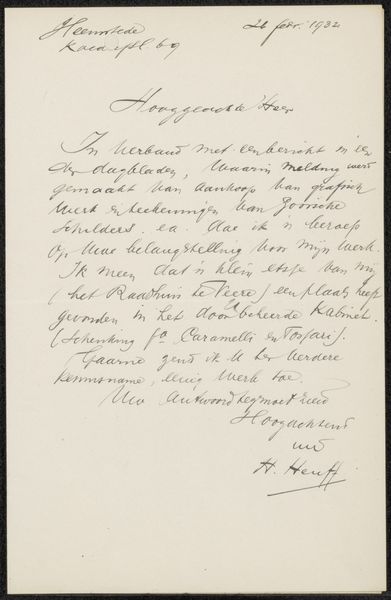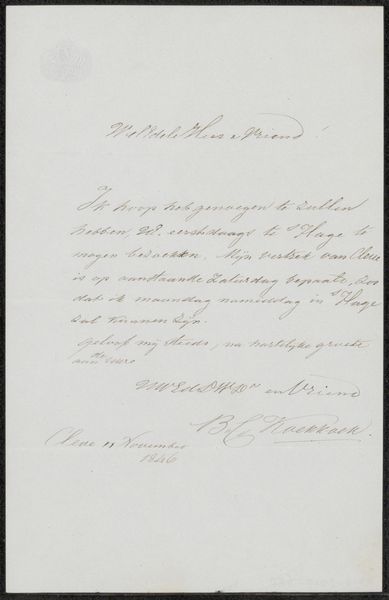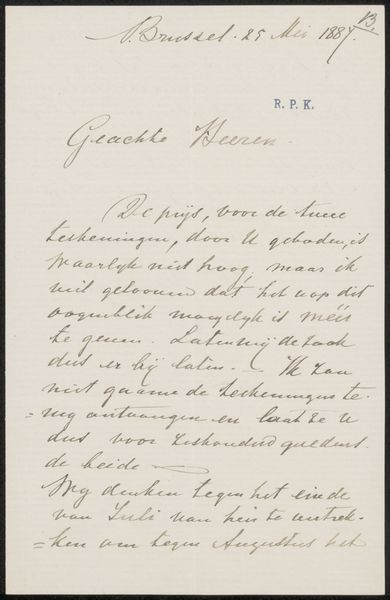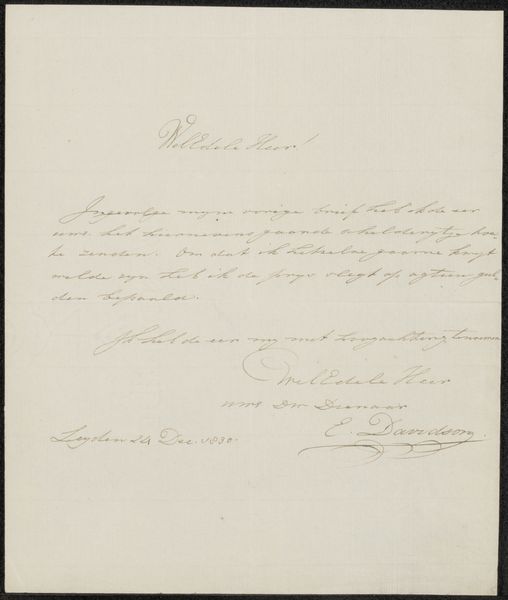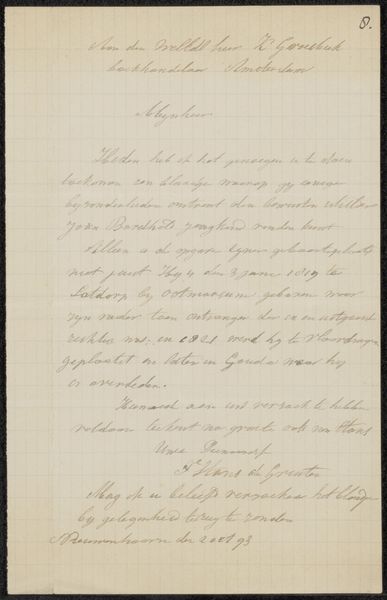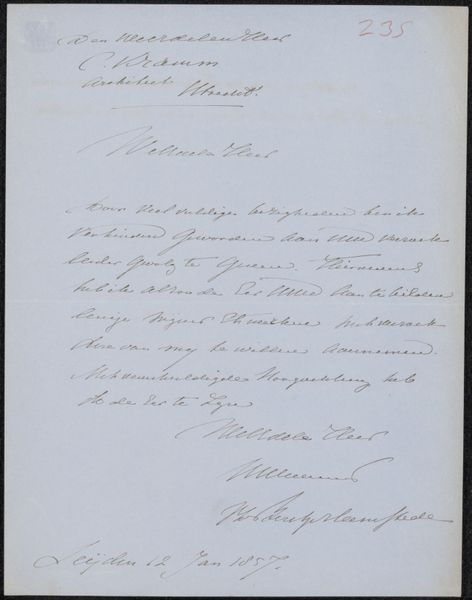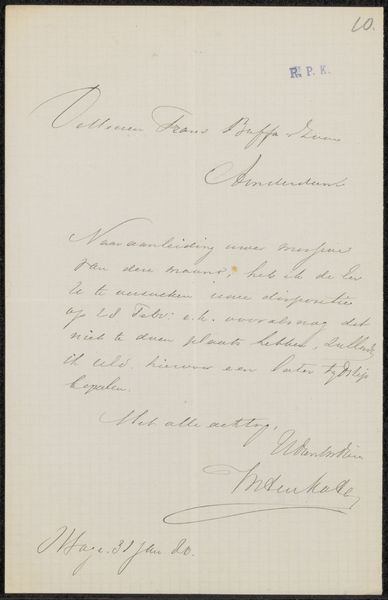
drawing, paper, ink, pen
#
drawing
#
pen sketch
#
paper
#
personal sketchbook
#
ink
#
pen work
#
sketchbook drawing
#
pen
#
calligraphy
Copyright: Rijks Museum: Open Domain
Editor: We're looking at "Brief aan anoniem," or "Letter to Anonymous," a pen and ink drawing on paper, possibly from 1887, by Hendrik Johannes Jesse. There's a delicacy to the script, almost like a calligraphic exercise, but of course it is intended to be read as a letter. What stands out to you about this work? Curator: The historical context really grabs me. Think about the late 19th century; letter writing was a crucial form of communication. Jesse, in presenting this "anonymous" letter, taps into the very public role such documents played. Were letters displayed, discussed openly? Who was intended to be privy to the letter’s contents? What political and societal events could have produced the content and language we see? Editor: That's fascinating. So you’re less focused on who it was to, and more who *might* be reading. I mean, why even keep a draft of this anonymous letter? Curator: Exactly. And consider the societal weight placed on literacy. Fine handwriting became a symbol of class and education, a visual performance. A museum elevates a utilitarian thing –a letter – into art and gives visibility to aspects of life beyond the elite. Do you think including something so quotidian impacts the traditional art audience? Editor: Definitely makes you rethink what is valued by art institutions. I had not considered the impact of access, or a lack thereof, to beautiful script! I might look at all handwriting differently now! Curator: It opens a window into a specific time. Looking closely makes us think more deeply about the value and impact of written communication itself.
Comments
No comments
Be the first to comment and join the conversation on the ultimate creative platform.
